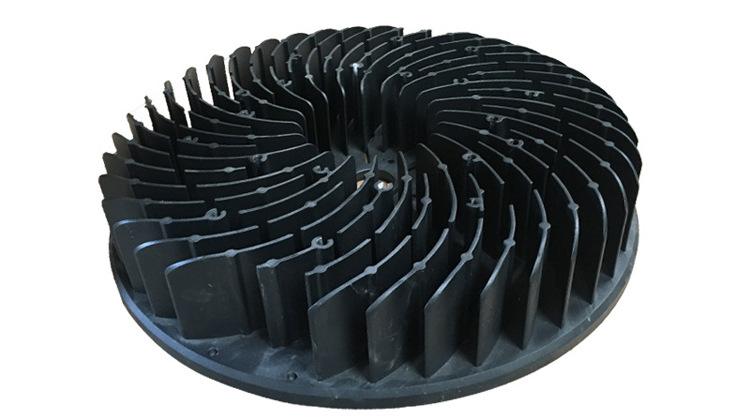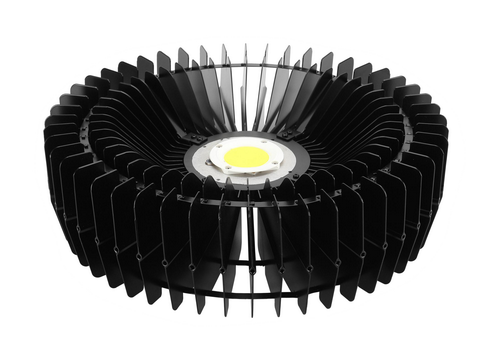At present, the biggest technical problem of LED lighting fixtures is the problem of heat dissipation
The poor heat dissipation leads to the LED driving power supply and electrolytic capacitors, which have become the shortboard for the further development of LED lighting fixtures, and the reason for the premature aging of LED light sources.
In the lamp scheme using LV LED light source, because the LED light source works in a low voltage (VF=3.2V), high current (IF=300~700mA) working state, the heat is very strong, and the space of traditional lamps is narrow and small area. It is difficult for a radiator to dissipate heat very quickly. Although a variety of heat dissipation schemes have been adopted, the results are unsatisfactory, and it has become an unsolvable problem for LED lighting fixtures. The search for easy-to-use, thermally conductive, and low-cost heat dissipation materials is always on the way.
At present, after the LED light source is powered on, about 30% of the electrical energy is converted into light energy, and the rest is converted into heat energy. Therefore, it is the key technology of LED lamp structure design to export so much heat energy as soon as possible. The heat energy needs to be dissipated through heat conduction, heat convection and heat radiation. Only by exporting heat as soon as possible can the cavity temperature in the LED lamp be effectively reduced, the power supply can be protected from working in a long-lasting high-temperature environment, and the premature aging of the LED light source due to long-term high-temperature operation can be avoided.
Heat dissipation of LED lighting fixtures
It is precisely because the LED light source itself has no infrared and ultraviolet rays, so the LED light source itself has no radiation heat dissipation function. The radiator must have the functions of heat conduction, heat convection and heat radiation.
Any radiator, in addition to being able to quickly conduct heat from the heat source to the surface of the radiator, mainly relies on convection and radiation to dissipate heat into the air. Heat conduction only solves the way of heat transfer, while heat convection is the main function of the radiator. The heat dissipation performance is mainly determined by the heat dissipation area, shape, and the ability of natural convection strength, and heat radiation is only an auxiliary role.
Generally speaking, if the distance from the heat source to the surface of the heat sink is less than 5mm, then as long as the thermal conductivity of the material is greater than 5, the heat can be dissipated, and the rest of the heat dissipation must be dominated by thermal convection.
Most LED lighting sources still use low-voltage (VF=3.2V), high-current (IF=200-700mA) LED lamp beads. Due to the high heat during operation, aluminum alloys with high thermal conductivity must be used. Usually there are die-cast aluminum radiators, extruded aluminum radiators, and stamped aluminum radiators. Die-casting aluminum radiator is a technology of die-casting parts. Liquid zinc-copper-aluminum alloy is poured into the feed port of the die-casting machine, and then die-casted by the die-casting machine to cast the shape radiator defined by the pre-designed mold.
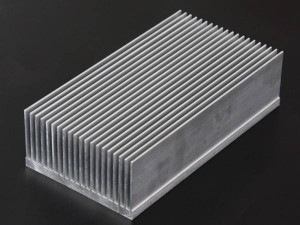
Die-cast aluminum heat sink
The production cost is controllable, and the heat dissipation fins cannot be made thin, making it difficult to maximize the heat dissipation area. The commonly used die-casting materials for LED lamp heat sinks are ADC10 and ADC12.
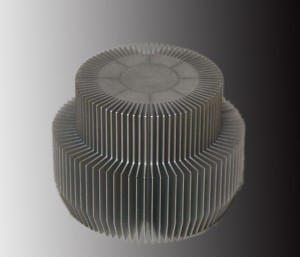
Extruded Aluminum Heat Sink
The liquid aluminum is extruded through a fixed die, and then the bar is cut into a radiator of the required shape by machining, and the post-processing cost is relatively high. The cooling fins can be made very thin, and the heat dissipation area is expanded to the greatest extent. When the cooling fins work, air convection is automatically formed to diffuse heat, and the heat dissipation effect is better. Commonly used materials are AL6061 and AL6063.
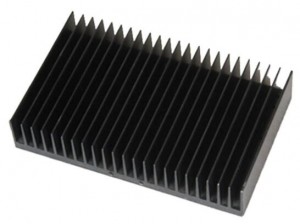
Stamped Aluminum heat sink
It is to punch and lift the steel and aluminum alloy plates by punching machines and molds to make them into cup-shaped radiators. The inner and outer periphery of the stamped radiators are smooth, and the heat dissipation area is limited due to the lack of wings. Commonly used aluminum alloy materials are 5052, 6061, and 6063. The quality of stamping parts is small and the material utilization rate is high, which is a low-cost solution.
The heat conduction of the aluminum alloy radiator is ideal, and it is more suitable for the isolated switching constant current power supply. For non-isolated switching constant-current power supplies, it is necessary to isolate AC and DC, high-voltage and low-voltage power supplies through the structural design of the lamps in order to pass CE or UL certification.
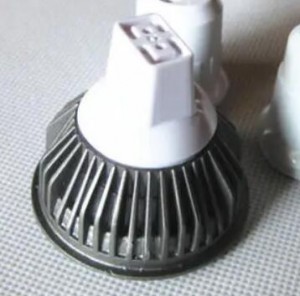
Plastic-coated aluminum heat sink
It is a heat-conducting plastic shell aluminum core radiator. The thermally conductive plastic and the aluminum heat dissipation core are formed on the injection molding machine at one time, and the aluminum heat dissipation core is used as an embedded part and needs to be machined in advance. The heat of the LED lamp bead is quickly transferred to the thermally conductive plastic through the aluminum heat dissipation core, and the thermally conductive plastic uses its multi-wings to form air convection heat dissipation, and uses its surface to radiate part of the heat.
Plastic-coated aluminum radiators generally use the original colors of thermally conductive plastics, white and black, and black plastic plastic-coated aluminum radiators have better radiation heat dissipation effects. Thermally conductive plastic is a thermoplastic material. The fluidity, density, toughness and strength of the material are easy for injection molding. It has good resistance to cold and thermal shock cycles and excellent insulation properties. The emissivity of thermally conductive plastics is better than that of ordinary metal materials.
The density of thermally conductive plastic is 40% smaller than that of die-cast aluminum and ceramics, and the weight of plastic-coated aluminum can be reduced by nearly one-third for the same shape of radiator; compared with all-aluminum radiators, the processing cost is low, the processing cycle is short, and the processing temperature is low; The finished product is not easy to break; the customer-owned injection molding machine can carry out the differentiated shape design and production of lamps. The plastic-clad aluminum radiator has good insulation performance and is easy to pass safety regulations.
High thermal conductivity plastic heat sink
High thermal conductivity plastic radiator has developed rapidly recently. High thermal conductivity plastic radiator is an all-plastic radiator. Its thermal conductivity is dozens of times higher than ordinary plastics, reaching 2-9w/mk. It has excellent heat conduction and heat radiation capabilities. ; A new type of insulation and heat dissipation material that can be used in various power lamps, and can be widely used in various types of LED lamps from 1W to 200W.
Integrated photothermal module heat dissipation
Combined with the three-dimensional packaging technology of K-COB light source and the self-excited phase change thermal control technology, an integrated photothermal module is formed. High-purity oxygen-free copper is used as the raw material, and the heat transfer coefficient can reach 300,000 w/mk, which is the highest in the world. Fast superconducting material, patented technology of uniform temperature base plate structure, and its special uniform temperature structure has the world's strongest thermal conductivity and heat dissipation capacity, which makes the lamp light source long life and the advantages of small size and light weight. The heat of the light source is quickly transferred to each heat sink to fully conduct thermal conversion with the space environment, so as to achieve rapid cooling, which is equivalent to a miniature air conditioner with LED chips.
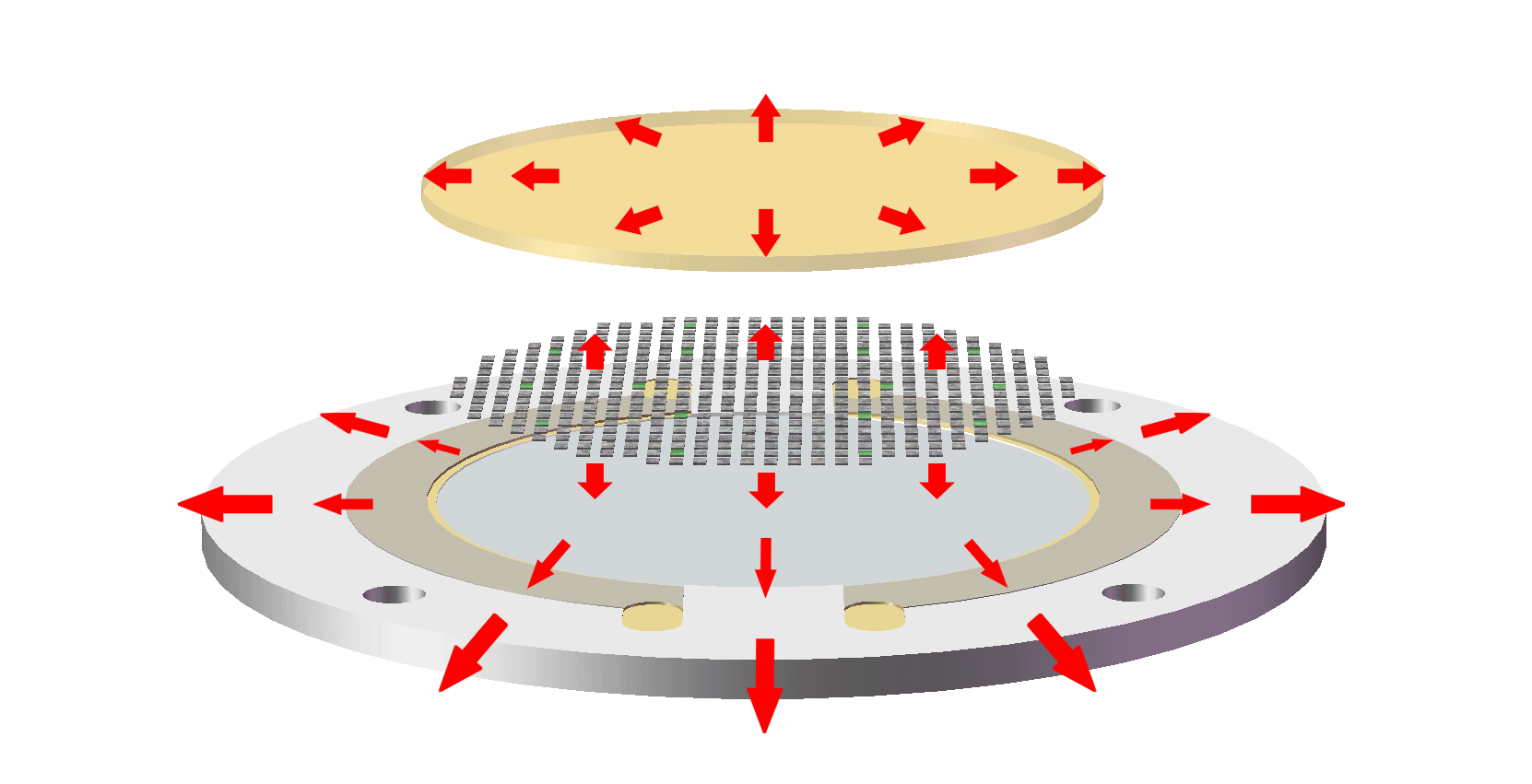
K-COB LED CHIPS
Coupled with the dual-channel heat conduction technology of the light source itself, the two main heat sources of the LED light source, the LED chip and the main heat channel of the ceramic phosphor, are separated. Laying out, and through reasonable chip arrangement, the phenomenon of thermal coupling can be effectively avoided, thereby effectively reducing the chip temperature, and the K-COB light source packaging technology has been developed, thereby further improving the performance and life of the LED light source.
WANT TO KNOW MORE DETAILS?
Contact our led expert, whatsapp:+8615375908767
Post time: Mar-10-2022

